A- Unity and Diversity
1- Molecules- Water and Nucleic Acids
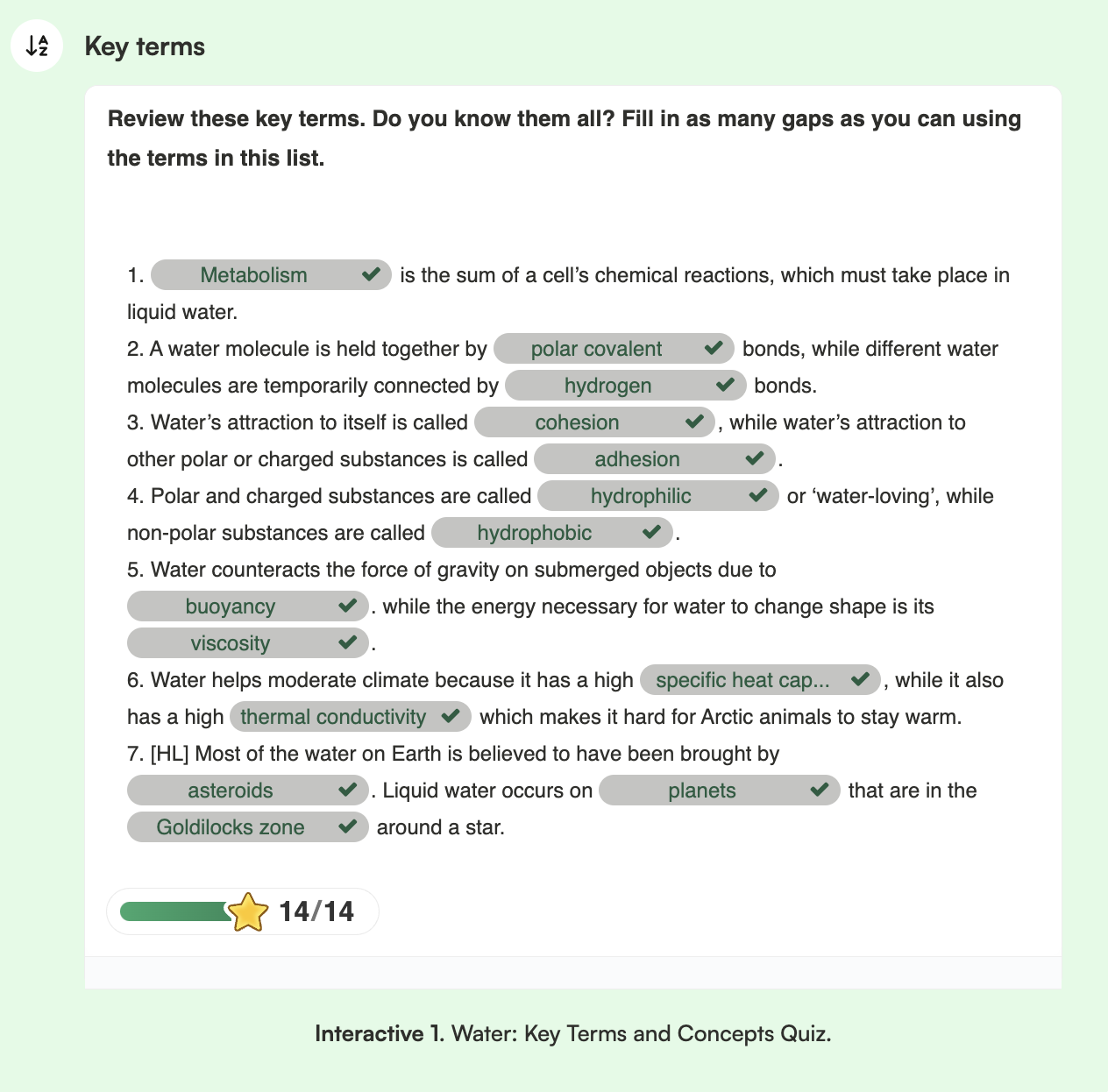
Water is essential for life and was where cells first formed.
Water molecules have polar covalent bonds because oxygen is more electronegative than hydrogen. This causes hydrogen bonds to form between water molecules.
Water is cohesive, creating surface tension—this lets some animals, like water striders, walk on water.
Water is a good solvent, so it can dissolve substances like sugars and enzymes used in metabolism. This also helps organisms transport materials in water-based solutions.
Water is adhesive to polar and charged (hydrophilic) substances.
Compared to air, water is more buoyant, viscous, has high thermal conductivity, and a high specific heat capacity—meaning it absorbs and retains heat well.
Animals like the ringed seal and black-throated loon have streamlined bodies for swimming. The seal has blubber for warmth, and the loon uses air and feathers for insulation.
Most of Earth’s water may have come from asteroids.
Earth's moderate temperature keeps water in liquid form, and gravity helps keep it on the planet.
The Goldilocks zone is the ideal distance from a star where a planet can have liquid water and possibly support life.
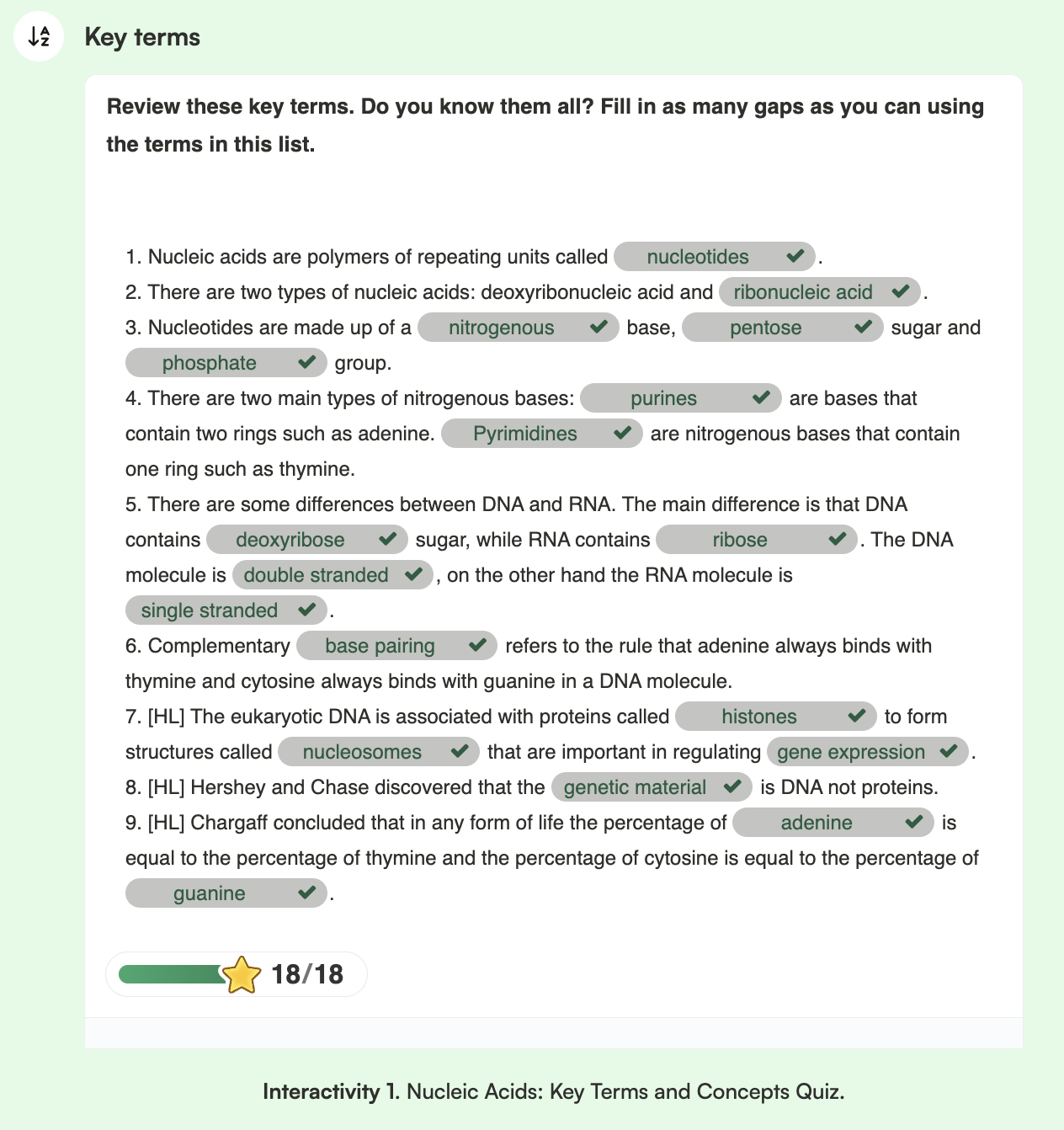
Nucleic acids are made of repeating units called nucleotides. Each nucleotide has three parts: a pentose sugar, a nitrogenous base, and a phosphate group. These join together by condensation reactions, forming covalent bonds between the phosphate of one nucleotide and the sugar of the next. This creates the sugar–phosphate backbone.
There are two main types of nucleic acids: DNA and RNA.
DNA nucleotides have the sugar deoxyribose and the bases adenine (A), guanine (G), cytosine (C), and thymine (T).
RNA nucleotides have the sugar ribose and the bases adenine (A), guanine (G), cytosine (C), and uracil (U).
DNA is usually double-stranded, while RNA is single-stranded.
Complementary base pairing (A with T, and C with G in DNA) helps accurate DNA replication, supports gene expression, and stabilises the DNA structure through hydrogen bonds.
The order of bases in DNA makes up the genetic code, which is shared by all living things, showing a common ancestry. DNA also stores a large amount of genetic information.
2- Cells- Cell Structure
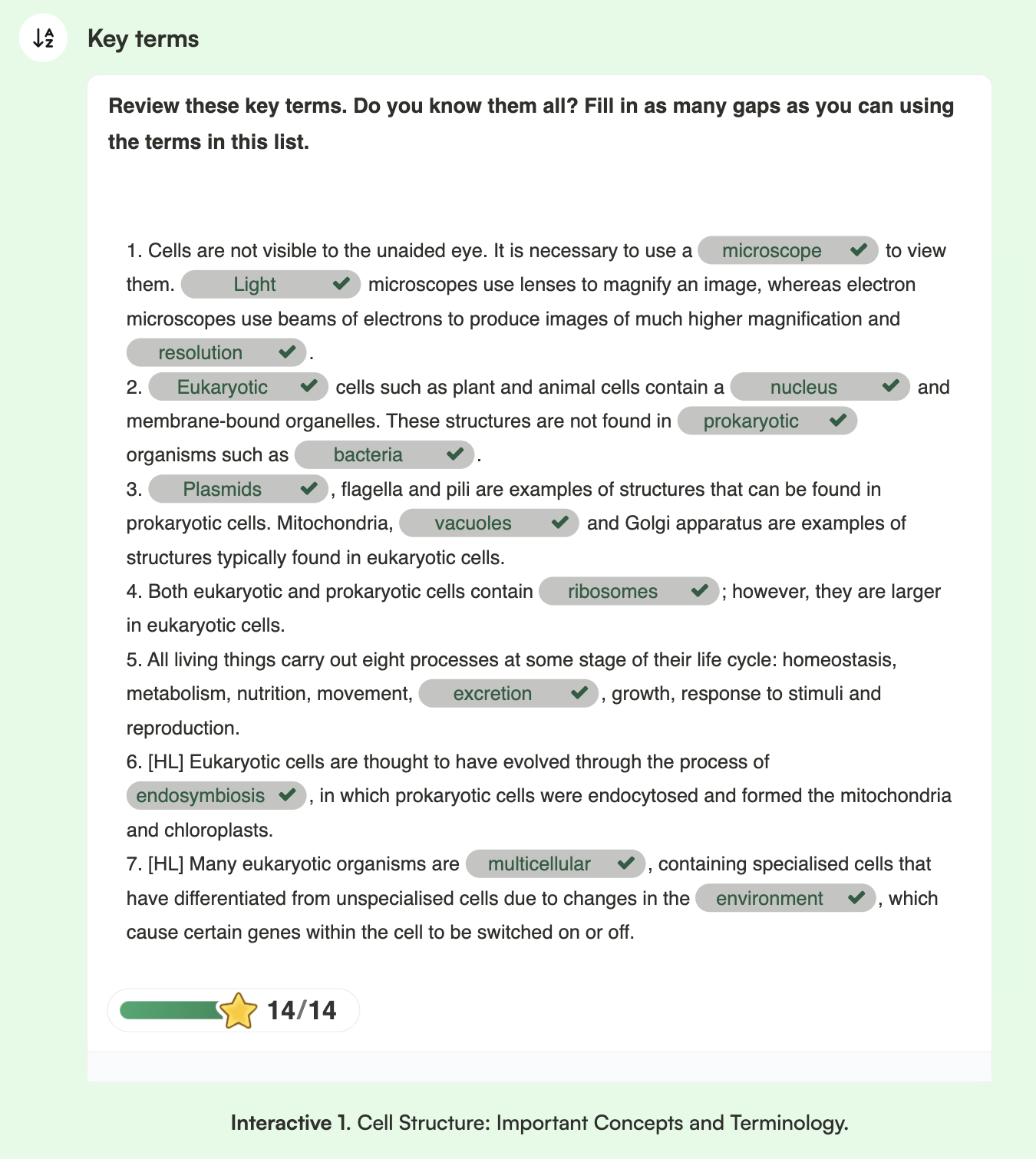
Microscopes help us see very small things like cells.
Light microscopes (used in schools) use light and lenses to magnify objects. Techniques like immunofluorescence and fluorescence tagging help highlight parts of cells.
Electron microscopes use electrons instead of light and show much more detail. Techniques include freeze fracture and cryogenic electron microscopy.
Magnification is calculated by:
Magnification = Image size ÷ Actual size (make sure both sizes are in the same units).All cells have:
DNA
Cytoplasm
Plasma membrane made of phospholipids
All living things carry out these 8 life processes:
Homeostasis
Metabolism
Nutrition
Movement
Excretion
Growth
Response to stimuli
Reproduction
Prokaryotic Cells (like bacteria):
No nucleus; DNA is free in the cytoplasm
No membrane-bound organelles
Have 70S ribosomes
Have cell wall and often plasmids
Some have a capsule, flagellum, or pili
Eukaryotic Cells (plants, animals, fungi, protists):
Have a nucleus and membrane-bound organelles
Have 80S ribosomes
DNA is wrapped around histone proteins
Organelles may include: mitochondria, ER (smooth and rough), Golgi apparatus, vesicles, vacuole, cytoskeleton
Extra features:
Animal cells: centrioles, lysosomes, sometimes vacuoles or cilia
Plant cells: cell wall, large vacuole, sometimes chloroplasts
Fungal cells: cell wall, large vacuole, centrioles
Protists are a mixed group of organisms that aren’t animals, plants, or fungi. They share some traits but also have unique ones.
Some eukaryotic cells are unusual:
Red blood cells and phloem sieve tube elements have no nucleus
Skeletal muscle cells and aseptate fungal hyphae have more than one nucleus
3- Organisms- Diversity of organisms
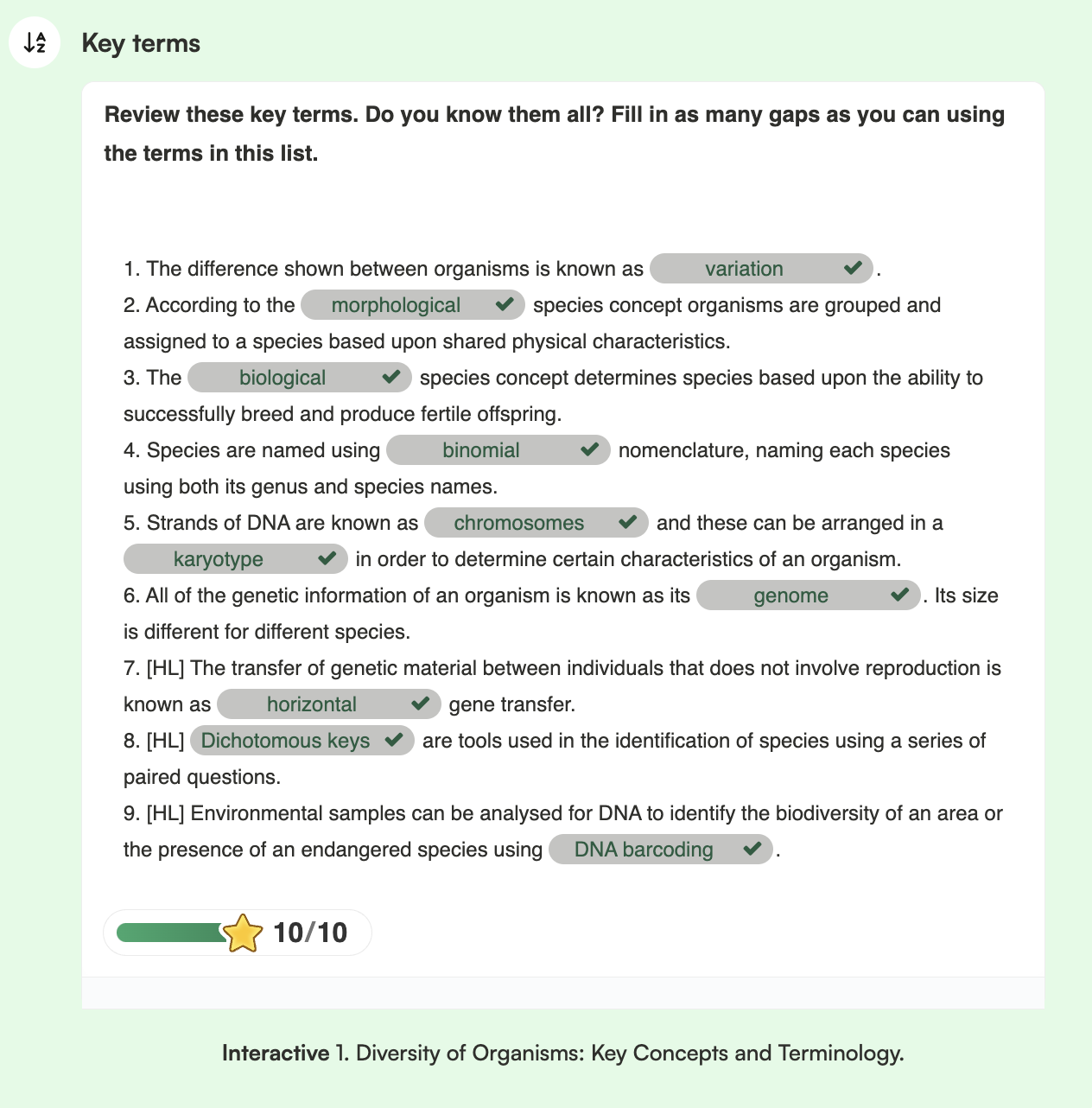
All living things show variation, which helps scientists group them into species.
The morphological species concept groups organisms based on how they look.
The biological species concept groups them based on whether they can reproduce and have fertile offspring.
Each species has a set number of chromosomes. For example, humans have 46 and chimpanzees have 48.
Karyograms are images of chromosomes, grouped by size, shape, banding, and centromere position.
Evidence shows that human chromosome 2 was formed by the fusion of two smaller chromosomes found in chimpanzees and other apes. It still contains most of the same genes.
A genome is all the genetic material of an organism. Genome sequencing lets us compare genomes between individuals and species.
Genomes within the same species are more similar than those of different species.
Genome sizes can be compared using online databases.
As genome sequencing gets faster and cheaper, it can help us understand evolution better and lead to personalised medicine based on an individual’s DNA.
4- Ecosystems- Evolution and speciation and Conservation of Biodiversity
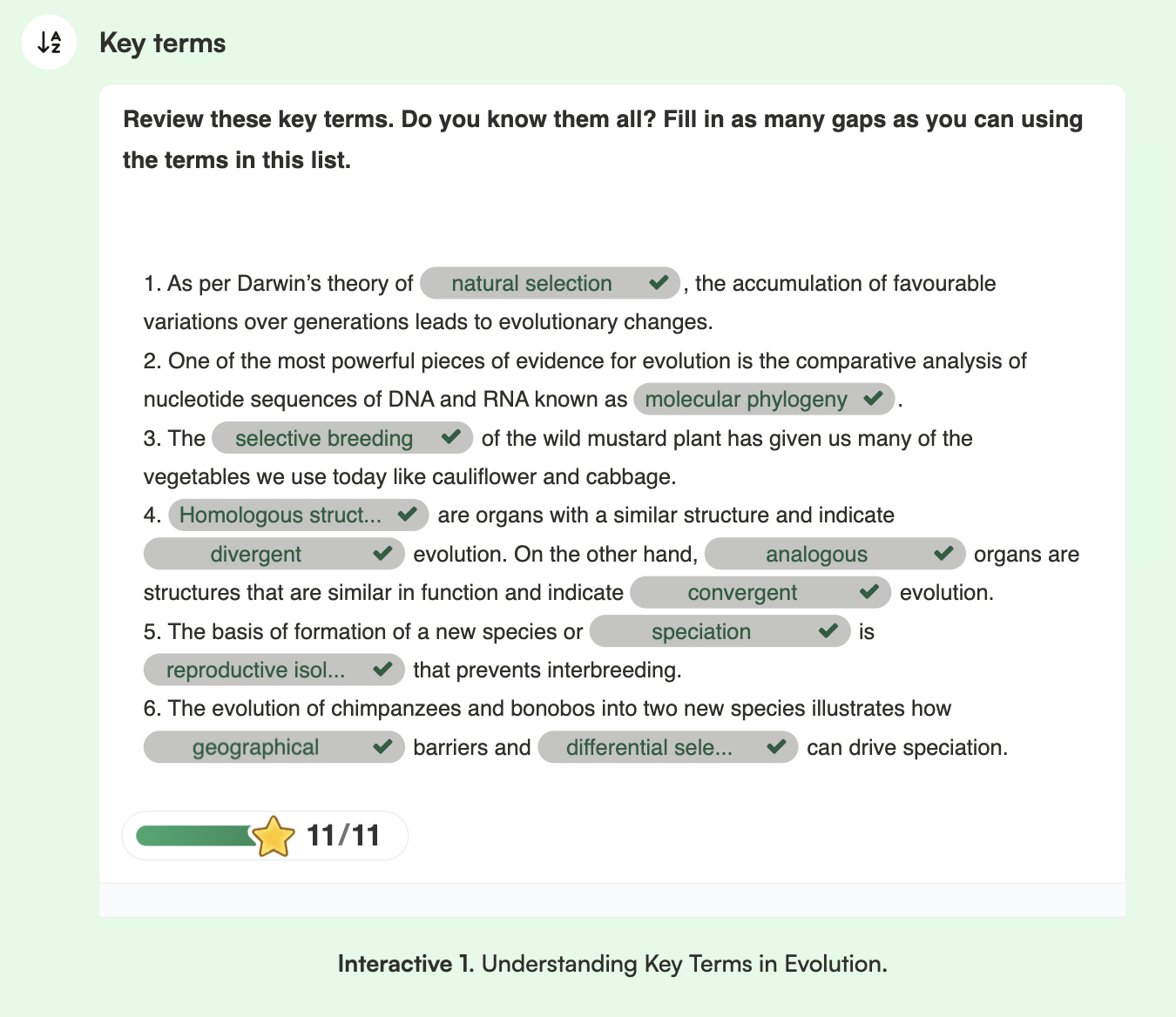
Evolution is the change in heritable traits (traits passed down through genes) in a population over time.
One strong piece of evidence for evolution is that all living organisms use the same genetic code, showing a common ancestry.
Selective breeding (artificial selection by humans) causes changes in the gene pool, leading to rapid evolutionary changes in plants and animals.
Homologous structures (like the pentadactyl limb—a five-fingered limb in humans, whales, and bats) show shared ancestry among different species.
Analogous structures (like the wings of birds and insects) perform similar functions but evolved independently—this is called convergent evolution.
Speciation happens when populations become reproductively isolated and face different selection pressures. Over time, they evolve into separate species.
For example, bonobos and chimpanzees evolved differently due to geographic isolation and environmental differences.

Biodiversity includes three levels:
Genetic diversity (variety of genes within a species)
Species diversity (variety of species)
Ecosystem diversity (variety of ecosystems)
There are more species on Earth now than ever before, but many are still undiscovered.
We are currently in the sixth mass extinction, which is different from past ones because it is caused by humans.
Examples of human-caused extinctions include:
North Island moas
Caribbean monk seals
Splendid poison frog
Dodos
Thylacine (Tasmanian tiger)
Ecosystems are also being lost, like the mixed dipterocarp forests, due to human activity.
Groups like IPBES and IUCN provide evidence for the ongoing biodiversity crisis.
Human population growth has increased demand for resources, leading to:
Overhunting and overexploitation
Habitat loss and fragmentation
Pollution
Invasive species, pests, and diseases
Biodiversity conservation can happen:
In situ (in natural habitats)
Ex situ (outside natural habitats, like zoos)
Methods include:
Captive breeding
Rewilding
Restoring damaged ecosystems
The EDGE of Existence program helps protect species that are evolutionarily unique and at high risk of extinction.